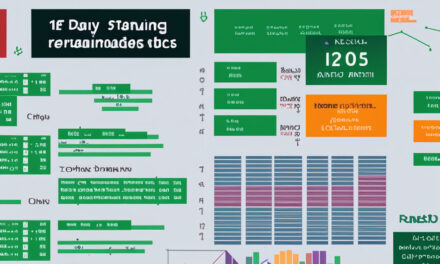As the world of financial trading continues to expand, Forex trading has emerged as a crucial player. With a daily trading volume surpassing $6 trillion, it’s no surprise that countless investors have turned their attention to this market. However, like any form of investment, Forex trading presents its unique set of challenges and risks. Thus, having an effective Risk Management strategy in Forex trading is paramount. This blog post will delve into the importance of risk management in Forex trading and provide nine powerful strategies to help manage these risks.
Why is Risk Management Important in Forex Trading?
Before exploring the strategies, it’s essential to understand why risk management is important in Forex trading. The Forex market is highly volatile, with currency prices fluctuating every second. These rapid changes can yield high profits but can also lead to substantial losses. Hence, risk management acts as a safety net, helping traders limit potential losses, safeguard their capital, and improve long-term trading performance.
1. Always Use a Stop-Loss Order
A stop-loss order is a tool designed to limit a trader’s loss on a position. Essentially, it’s a predefined point at which a trade will be closed if the market moves against it. While it can’t guarantee profits, it can significantly prevent spiraling losses.
2. Implement Take-Profit Orders
Similar to stop-loss orders, a take-profit order ensures a trade closes once it reaches a certain level of profit. Balancing the use of these orders is crucial to effectively manage risk and reward in Forex trading.
3. Leverage Moderately
While leverage in Forex trading can magnify profits, it can also inflate losses. It’s crucial to use leverage judiciously, taking into account the potential downside.
4. Diversify Your Portfolio
Avoid putting all your eggs in one basket. Diversifying your trading portfolio by trading different currency pairs can help spread risk.
5. Keep Emotions in Check
Forex trading should be a rational process, free from emotions like fear and greed. Emotion-driven decisions often lead to increased risk and potential losses.
6. Regularly Review Your Trading Strategy
A regular review of your trading strategy can highlight any potential issues or areas for improvement. Adjustments may be required to adapt to the evolving Forex market conditions.
7. Utilize Risk/Reward Ratios
A risk/reward ratio helps traders quantify the potential risk and reward from a particular trade. Ideally, traders should aim for trades where the potential reward outweighs the potential risk.
8. Stay Updated on Market News
Forex markets are heavily influenced by economic news and events. Staying informed can help traders anticipate market movements and adjust their strategies accordingly.
9. Learn and Adapt
The Forex market is continually changing. Successful risk management involves constant learning and adapting to new market conditions and trends.
Risk management in Forex trading is as crucial as any trading strategy. It’s a key differentiator between professional traders and novices. The nine strategies outlined in this blog post serve as a starting point to develop a robust risk management plan. Remember, the goal isn’t to avoid losses entirely – an impossible feat in trading – but to manage and limit them effectively.
So, keep these strategies in mind, stay disciplined, and take a step towards more efficient and profitable Forex trading. You might be surprised by the positive impact effective risk management can have on your trading journey.






